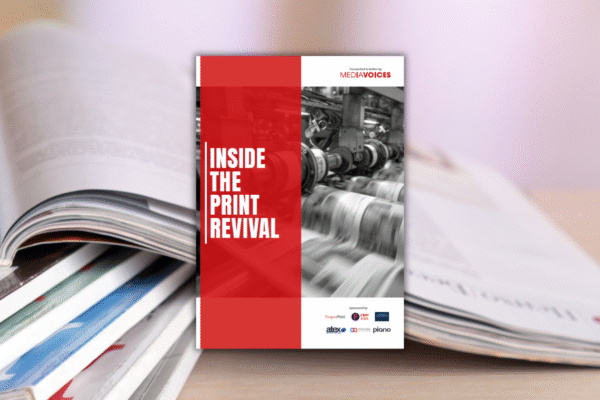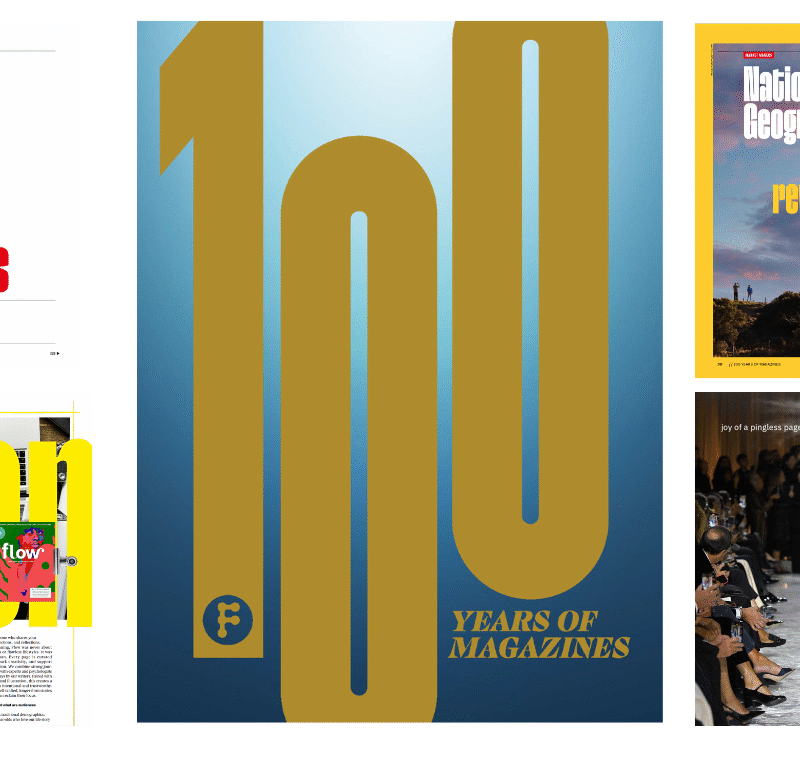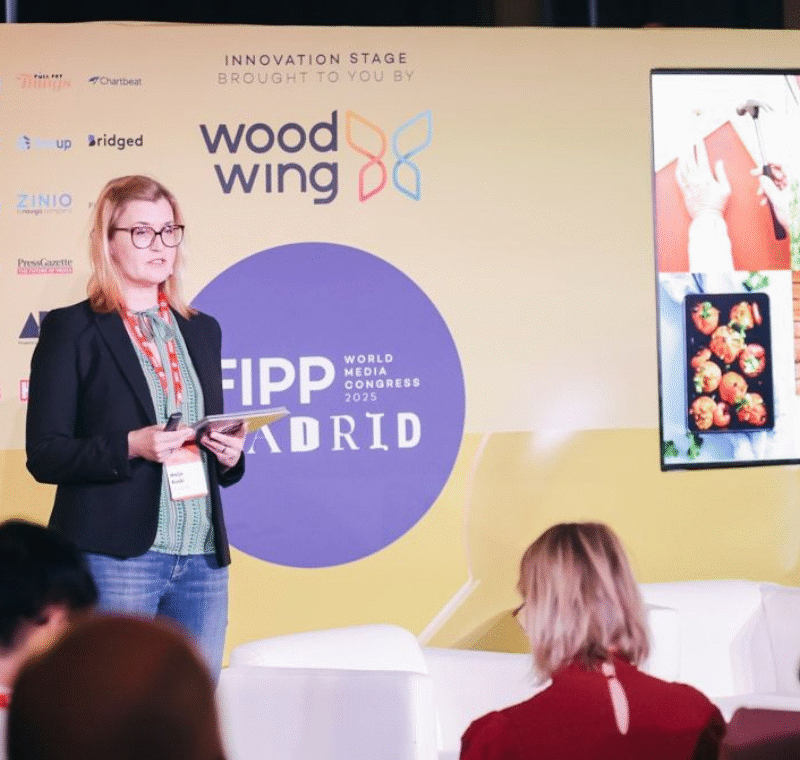Paper trail: Media Voices launches new report looking at print’s revival
Over the last few years, reports of print’s death have been greatly exaggerated. In fact, despite some doomsayers writing obituaries for paper in the face of the digital revolution there are signs in 2025 that print is not only surviving but actually thriving.
As the debate over the state of print intensifies, Media Voices – publishers of The Publisher Podcast and The Publisher Newsletter – recently released a new report, co-sponsored by FIPP, to gauge the trajectory of paper products. Inside the Print Revival explores why the resurgence is happening now, how today’s print market is different, the challenges that await and some of the opportunities in print magazine publishing.
“People still print magazines because there’s money in printing magazines,”
Peter Houston, co-founder of Media Voices and publisher of The Grub Street Journal, pointed out during his keynote address at the recent Publisher Podcast Summit and Awards in London. “It’s gobsmacking that PwC found 80% of consumer magazine revenues are still from print.
“This is global, so it takes in a lot of different markets. If you look at B2B, it’s lower, but still half of the money being made by publishers is from print. So print is not dead. Nowhere near it.”
Backing up these findings, a survey carried out FIPP shows that 50% of our members get half their money from print. Most of the members who took part in the survey believe that there has been no rapid decline in print.
“You could argue that newspaper circulations have fallen off a cliff in print, but magazines are a very different story,” said Houston.
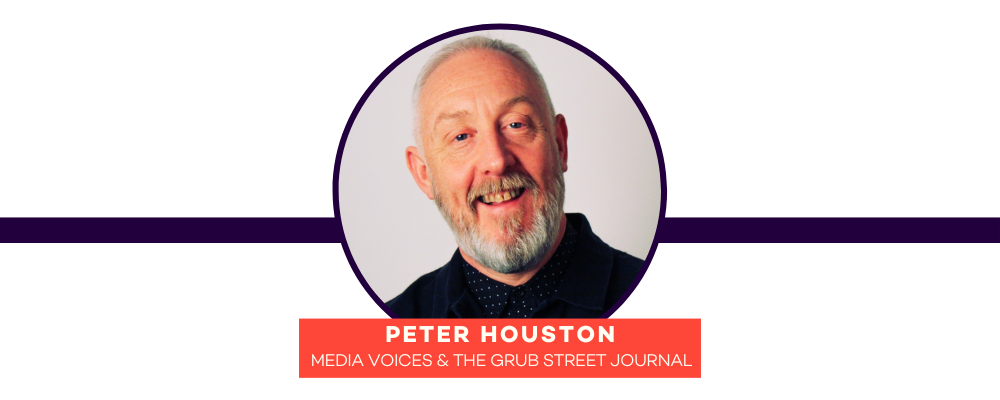
Turning a negative into a positive
Evidence of print’s revival can be found in the way media brands like the BBC, Forbes, The New York Times and Nieman Lab have been covering paper products – with the conversation going from negative to positive.
For instance, the BBC ran a story about NME and other high-end magazines making a “vinyl-style comeback”. Nieman Lab reported on how The Guardian has brought its long-read franchise back to actual paper, while The New York Times has celebrated the “revenge of the niche fashion magazine”.
“There has been coverage of high-profile print reboots, but independent magazines are also getting much more attention than it used to get,” said Houston. “It used to be a properly niche, cultish past time but I think it is changing and becoming more mainstream. Mainstream media is paying attention.”
Houston said it was important to manage expectations and not decline. “If you talk about print properly, you can have a really sensible conversation. If you’re still looking for it to be the way it was 20 years ago, maybe not. As long as you can manage your expectations, you can have sensible, proper conversations about print.”

Madrid, Spain, 21-23 October 2025
What does the next era of media look like?
Hear from Time, The New York Times, Arab News, The Economist, Axel Springer, Condé Nast, Hearst, RocaNews… and many more.
The trough of disillusionment
Houston believes the revival of print has coincided with publishers finding themselves in a “trough of disillusionment” when it comes to digital media.
“Referral traffic has gone to crap and programmatic advertising rates have been nowhere near what it used to be,” he said. “And people even find their way around paywalls, or they just bounce off paywalls. So as much as digital subscriptions are part of the answer, it’s not an easy thing to do.
“And while publishers are fed up with how digital media is working or not working, I would argue that audiences are actually more scared and fearful than disillusioned. They are facing misinformation and disinformation, but there is also this fear of digital harm.
“Australia is trying to introduce legislation to 16-year-olds out of social media. France is saying that 6-year-olds should not be on screens. Everyone’s scared that the algorithms have taken over and feeding them all sorts of nonsense.
“That digital disillusionment that the audiences are feeling is putting focus back on print.”
A Swift change
Helping to drive the revival of print is the fact that paper products have gone from a disposable to a collectable. A prime example of this is Time magazine picking Taylor Swift as their Person of the Year in 2023.
Sensing that Swifties would want to collect anything and everything with the pop star on it, the magazine released three different version of the cover with portrait images of Swift. Readers had the option of buying one issue for $9.99 or three for $19.99.
“(Time) normally send 180,000 copies to retail, but for this issue they sold 860,000 copies. They really, properly plugged into the idea of collectability,” said Houston. “That’s one of the things that makes print different these days. It has moved from a disposable to a collectable.
“It’s about this badge of belonging. It’s the idea that I am part of the community, part of this club, part of the people who are smart enough to read this magazine.”
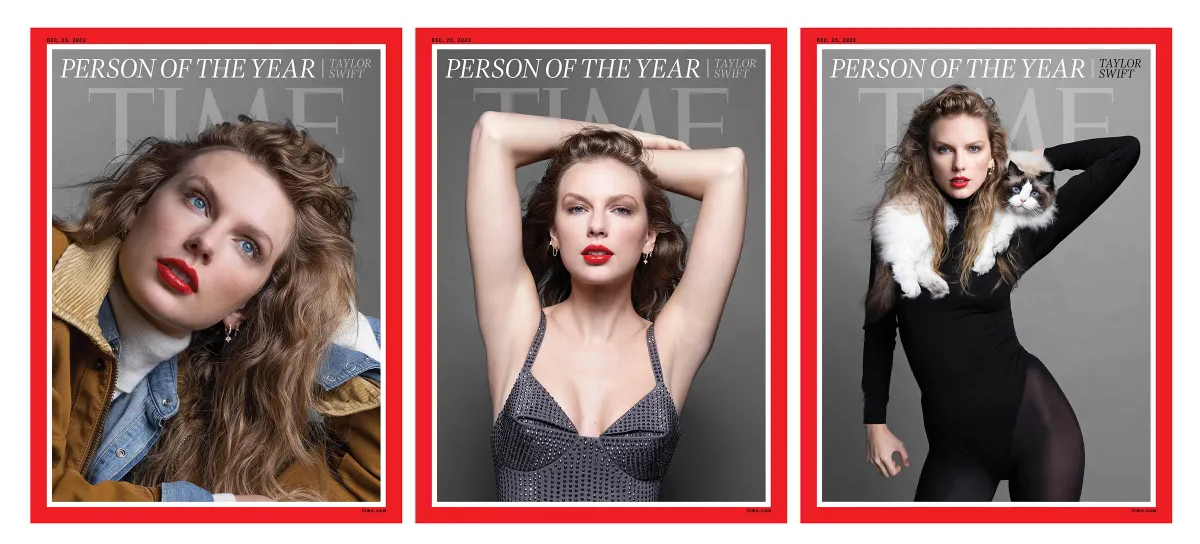
Seeds of change
Despite the revival, it’s clear that the print market simply is not what it used to be. Print magazines in the UK were worth about £1.3 billion some 20 years ago but is now worth £500 million. For publishers to tap into the new print market, it’s crucial that high-calibre magazines are produced.
“It’s about producing a premium product – good quality, well-made, curated print,” said Houston. “You have to remember what print can do, that digital can’t. It’s actually in the real world. You can pick it up. You can take stuff with you. Like Gardeners’ World’s May issue including packets of seeds with an edition. You cannot do seeds digitally.”
Houston warned delegates not to fall into the trap of selling print products too cheaply.
“You don’t have digital reach. You’re not working on a platform scale. So, what are you going to do that makes sense? What’s the right frequency and what’s the right price? Because if your selling print really cheap, you’re probably not doing yourself any favours. There’s elasticity there. Print magazine buyers are not price sensitive, they are value sensitive.
“And you actually have to sell enough to make a profit. If you don’t have a marketing department, it’s hard to sell enough. So, get your premium pricing right, but also manage your cost and focus on those margins.
“That’s an obvious thing to say sometimes to people in corporations. It’s not always an obvious thing to say to people who are working in an independent magazine environment where it’s driven by passion rather than by the profit. But profit is important because that’s what lets you make your next magazine.”
Houston also extolled the virtues of print when it comes to sustainability, pointing out that it compares favourably to digital. “Digital’s hidden carbon footprint is insanity. And the fact that it’s hidden is a problem.
“Print of course has a carbon footprint, but it’s got a longer shelf life, so it all starts to even out. It’s not as easy as just saying ‘go digital and go green’ – because that’s nonsense.”

